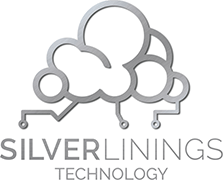 Introduction
Introduction
As a senior living CEO, you're already managing a host of responsibilities—from maintaining compliance to ensuring resident care and safety. But one rapidly growing area of concern in your risk portfolio is cybersecurity. With critical data, medical records, and operational systems at stake, the question is no longer if you need cybersecurity insurance—it's what kind of policy offers the protection your facility truly needs.
Cyber threats aren’t just a concern for hospitals or large healthcare systems. Senior living facilities are increasingly targeted by cybercriminals—and the impact of a breach can be devastating, both financially and reputationally.
Let’s explore how cybersecurity insurance fits into a modern risk management strategy—and what you should know before choosing a policy.
Why Senior Living Facilities Are Prime Targets
Cybercriminals have zeroed in on the senior care sector for four major reasons:
- Valuable Data: Facilities maintain sensitive medical, financial, and personal data for residents, which can be sold or used for identity theft.
- Operational Dependence on Tech: From medication dispensing to access controls, daily care operations depend on digital systems.
- Perceived Vulnerability: Smaller IT budgets and limited in-house expertise can make facilities appear easier to exploit.
- High Ransom Pressure: Attackers know that downtime directly affects resident health and safety—creating pressure to pay quickly.
According to recent healthcare cybersecurity reports, data breaches in the sector surged by 35% in the past year. The average cost of a breach in healthcare? A staggering $10.1 million.
What Does Cybersecurity Insurance Cover?
A well-structured cybersecurity insurance policy provides financial protection across several key areas:
- Breach Response – Covers costs related to investigation, resident notifications, legal counsel, and crisis communication.
- Legal Fees & Fines – Pays for defense against lawsuits and regulatory penalties (HIPAA, state-level laws).
- Ransomware – May cover extortion payments and negotiation (note: policies vary)
- Business Interruption – Compensates for income lost during system downtime.
- Data Recovery – Helps restore corrupted systems or lost information.
- Third-Party Liability – Protection if residents or vendors file claims after a breach.
What’s Often Not Covered
Be sure to read the fine print. Common exclusions include:
- Pre-existing vulnerabilities known prior to policy purchase
- Social engineering attacks, such as phishing scams, unless explicitly added
- Hardware damage or physical IT infrastructure replacement
- Reputation damage, which is hard to quantify but very real in impact
How Much Coverage Do You Really Need?
To evaluate your risk exposure, ask yourself:
- How many resident records do we maintain, and how sensitive is the data?
- How reliant is our care delivery on digital tools and systems?
- What security controls are currently in place (e.g., firewalls, staff training)?
- Are we compliant with HIPAA, state privacy laws, and industry best practices?
- Could we financially absorb the fallout of a cyberattack without insurance?
The True Cost of a Cyber Incident in Senior Living
Beyond immediate financial losses, the ripple effects of a breach can linger:
- Resident Trust – Residents and families expect their personal information to be safe. One incident can shake confidence in your facility’s care.
- Regulatory Scrutiny – Breaches often trigger audits, penalties, and reputational damage.
- Operational Shutdowns – Without access to medical or billing systems, daily operations grind to a halt.
- Recruitment & Retention – Skilled staff may be reluctant to join an organization perceived as insecure.
Choosing the Right Cyber Insurance Policy
Look for these features when reviewing potential policies:
- Adequate Coverage Limits – Does it reflect your data volume and operational scale?
- Reasonable Deductibles – Balance affordable premiums with feasible out-of-pocket costs.
- Retroactive Coverage – Will it cover incidents discovered after purchase but initiated earlier?
- Breach Response Support – Do they provide 24/7 expert support or allow you to choose your own legal/tech team?
- Healthcare Experience – Does the insurer understand the unique risks of long-term care and senior housing?
Questions to Ask Your Insurance Provider
- How is a “security incident” defined under this policy?
- What are the minimum cybersecurity requirements for coverage to remain valid?
- What’s the claims process during an active breach?
- Do your incident response teams have experience with healthcare or senior care facilities?
- Are you updating coverage to include emerging threats like AI-driven attacks or medical device breaches?
Insurance Is Not Enough: Building a Holistic Cybersecurity Strategy
Insurance is a key component—but not a silver bullet. Combine it with strong preventative measures:
- Cybersecurity Frameworks – Adopt healthcare-specific standards like NIST or HITRUST.
- Staff Training – Regularly train employees to spot phishing and avoid common traps.
- Incident Response Plans – Develop and rehearse procedures for breach response.
- Vendor Security Reviews – Assess the security of software providers and contractors.
- Annual Security Audits – Test your systems with vulnerability scans and penetration testing.
Final Thoughts: Coverage + Care = Resilience
Cybersecurity insurance is no longer a luxury—it's a necessity. But choosing the right policy requires more than signing a premium quote. It means understanding your facility’s unique risk landscape and combining insurance with proactive security, staff education, and reliable IT infrastructure.
At Silver Linings Technology, we specialize in helping senior living and healthcare organizations strengthen their cybersecurity posture while aligning with insurance requirements. Whether you're evaluating a new policy or need help building a risk management strategy, we're here to support your mission of safe, secure care.
Let’s talk about how to protect your facility—digitally and financially.
Call us at 360-450-4759 or visit www.silverliningstechnology.com to schedule a consultation.


